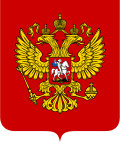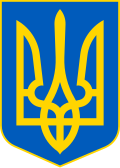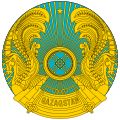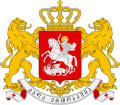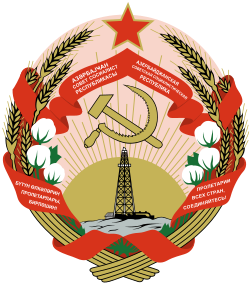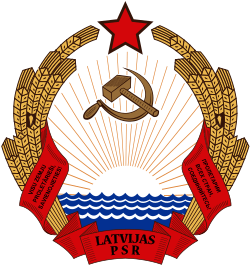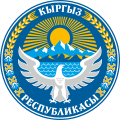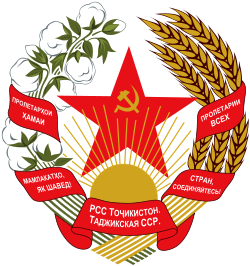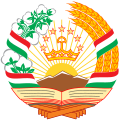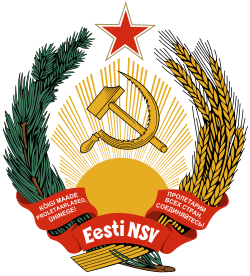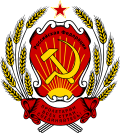Top Qs
Timeline
Chat
Perspective
Emblems of the Soviet Republics
From Wikipedia, the free encyclopedia
Remove ads
The emblems of the constituent republics of the Union of Soviet Socialist Republics all featured predominantly the hammer and sickle and the red star that symbolized communism, as well as a rising sun (although in the case of the Latvian SSR, since the Baltic Sea is west of Latvia, it could be interpreted as a setting sun), surrounded by a wreath of wheat (except the Karelo-Finnish SSR with a wreath of rye). The USSR State motto, Workers of the world, unite!, in both the republic's language and Russian was also placed on each one of them. In addition to those repetitive motifs, emblems of many Soviet republics also included features that were characteristic of their local landscapes, economies or cultures.
The emblems are often called coats of arms, but since they (deliberately) did not follow the rules of heraldry, most of them cannot be considered coats of arms. However, they all did follow the same basic pattern, a pattern which sometimes has led to the use of the term "socialist heraldry".
By the dissolution of the Soviet Union on 26 December 1991, only Belarus, Estonia, Georgia, Latvia, Lithuania, and Moldova had adopted new official arms, while the other ones retained the Soviet emblems until new ones were adopted in the years following.
Remove ads
Emblems of the Soviet Republics
Summarize
Perspective
The table below presents final versions of the renderings of the Soviet republics' emblems prior to the dissolution of the USSR in 1991, as well as the arms of two republics that ceased to exist before that time. For comparison, national arms of present-day successor states of the Soviet republics are also shown. As can be seen, most Central Asian post-Soviet republics use arms based on or reminiscent of the Soviet-era emblems, with Tajikistan and Uzbekistan have present-day arms nearly identical to the Soviet one. Most European republics, on the other hand, reverted to their traditional pre-Soviet heraldic arms. Belarus used the traditional Pahonia as its coat of arms from 1991 to 1995 when it was replaced by a new emblem closely resembling the Soviet-era design.
Remove ads
Derived designs
The secessionist Pridnestrovian Moldavian Republic (Transnistria), internationally recognised as part of Moldova, uses an emblem based on the emblem of the Moldavian SSR.
- Emblem of the self-proclaimed Pridnestrovian Moldavian Republic
- Emblem of the Russian Federation (1992–1993)
References
See also
Wikiwand - on
Seamless Wikipedia browsing. On steroids.
Remove ads


